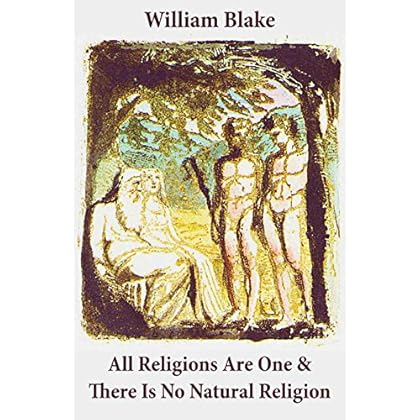All Religions Are One & There Is No Natural Religion (Illuminated Manuscript with the Original Illustrations of William Blake)
Category: Kindle Store,Kindle eBooks,Politics & Social Sciences
All Religions Are One & There Is No Natural Religion (Illuminated Manuscript with the Original Illustrations of William Blake) Details
This carefully crafted ebook: "All Religions Are One & There Is No Natural Religion (Illuminated Manuscript with the Original Illustrations of William Blake)" is formatted for your eReader with a functional table of contents. All Religions are One is the title of a series of philosophical aphorisms by William Blake, written in 1788. Following on from his initial experiments with relief etching in the non-textual The Approach of Doom (1787), All Religions are One and There is No Natural Religion represent Blake's first successful attempt to combine image and text via relief etching, and are thus the earliest of his illuminated manuscripts. As such, they serve as a significant milestone in Blake's career. William Blake (1757 – 1827) was a British poet, painter, visionary mystic, and engraver, who illustrated and printed his own books. Blake proclaimed the supremacy of the imagination over the rationalism and materialism of the 18th-century. Largely unrecognised during his lifetime, Blake is now considered a seminal figure in the history of both the poetry and visual arts of the Romantic Age.

Reviews
In this tiny but profound tome of illustrated Postit-sized notes. Blake makes an argument for two things-One that within men and women is an inherent Divine spark which forms and directs us all (and has throughout history) that he labels 'Poetic Genius' and that this is the source of the creative Voice for Truth that has directed all Art, Poetry, and Religions that mankind has created. And that they all have a sort of similarity in that they come from this same Divine source (Religions for example all being based around the idea of love). His second argument however is that each human individual also comes with their own unique set of biases, superstitions, and level of understanding (be it high or low) or what he calls 'weaknesses' that also puts an imprint on everything that person produces-- be it art, poetry, or prophetic religions-- basically everything produced and written down or created by mankind in it's history. Which succinctly explains why one religion can have seemingly crazy taboos, admonishments, and hate-filled dictums, while another religion can have a totally different set of prescriptions and 'must do' principles contradictory to the first. Basically, it's saying to always keep in mind the very human source, with both it's Divine aspects and it's flaws, when looking at all art, poetry, literature or religions.


